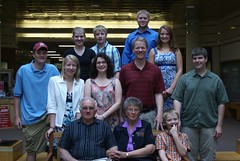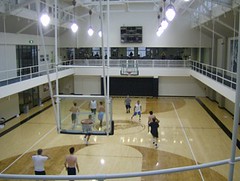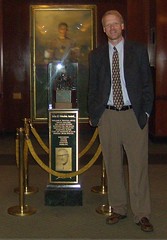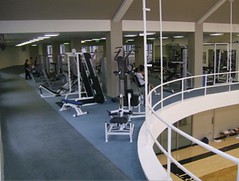
Tomorrow I’m participating in this webinar. From Sunday through Tuesday I will be at this excellent face-to-face conference. These are two great ways to learn.
And as Ben points out, social networking sites like Facebook are another type of “gathering place.” Not only are they cost-effective; they’re just plain effective. He does the math on the cost of exhibiting at a conference, and Facebook (out-of-pocket cost = $0) compares quite favorably. And the great thing about these social networking sites is how they enable people with common interests to find each other, even if they are continents apart.
Each of these three kinds of “meetings” has strengths and weaknesses:
A webinar is great for having a group of presenters convey a large amount of information in a relatively short time. It’s also cost-effective because there isn’t travel time involved, and typically several people can listen on a speakerphone for the same registration fee. There typically is some room for Q&A, but people may feel bashful about asking their question in front of several hundred others. And as a presenter who likes to use humor, the dead silence after a joke with everyone in listen-only mode can be kind of eery. At least with my kids I hear the groans and see the eyes roll. But there isn’t much of a networking opportunity, except you usually get the contact information for the presenters.
Obviously an in-person conference is much more expensive, as Ben outlines, with travel, lodging and individual registrations. But for richness of information exchange, for give-and-take, for audience reaction, for hands-on-demonstrations and for networking, nothing can beat it. And as this article from earlier this week reported, a British evolutionary psychologist name Will Reader has found…stop the presses…that you need to meet someone face-to-face to become close friends.
In their study, Reader and colleagues asked people a series of questions about their attitudes toward friendships and found 90 percent of individuals said it was imperative to know somebody face-to-face to form the tightest bonds.
The key it seems is face-to-face interaction where people can interpret social clues such as laughs and smiles that help determine if others are friends to be counted on, Reader said.
“That weird experience of laughing together where people can find they have similar goals and experiences is necessary,” Reader said.
They get doctorates for research like this. Really. And probably government funding, too.
Both webinars and traditional conferences are bound by time and space, though. When the webinar is over, you typically can get a CD, as well as the presenters’ slides. Likewise with in-person conferences: you may take home a conference binder of presentations, along with a mitt full of business cards. But when the event is over, it’s over.
Blogs and social networking sites are virtual gathering places in their own right, as Ben says. The cost is only your time, and you can learn a lot. You can ask questions and engage in discussions. And while Dr. Reader’s research suggests you won’t become blood brothers, you can make some good contacts.
Probably the most effective “conference” strategy is to take advantage of the strengths of each form, using blogs and networking sites to continue conversations and relationships started at the other two.
That’s why I formed this group called Lee Aase’s Professional Contacts in Facebook. And here’s a post on the Discussion Board in that group to continue the discussion from Friday’s webinar, or ask additional questions. If you join my Professional Contacts group you won’t be my “friend” in Facebook, but we will be on each others’ virtual Rolodexes so we can stay in contact.
Or, if you’d like, you can join Facebook here and then click here to add me as a friend.
If you’re not ready to join Facebook, chiming in on the comments to this post would be a way to continue the discussion and ask questions.Or you could go to Nick’s blog and ask questions or make comments there, too. You also can read more about business uses of Facebook here, or by clicking “Facebook Business” in the top navigation.
And don’t forget that it’s all free.
 Technorati: Facebook, conferences, seminars, webinars, free
Technorati: Facebook, conferences, seminars, webinars, free

 Technorati: Walter Jennings, Tina Brown, Jeff Berman, Miles White, Mitch Gelman, Arthur W. Page, conferences, Kenneth Lieberthal, Unitus, Beth Comstock, Geoff Davis, Adam Brown, Coca-Cola
Technorati: Walter Jennings, Tina Brown, Jeff Berman, Miles White, Mitch Gelman, Arthur W. Page, conferences, Kenneth Lieberthal, Unitus, Beth Comstock, Geoff Davis, Adam Brown, Coca-Cola


















